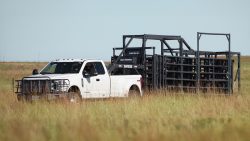Beyond Pen and Paper: Herd Management with Software Solutions
By Jaclyn Krymowski
Managing a herd is difficult enough, especially with limited help. Keeping insufficient records, or not being able to properly analyze them, can make the job exponentially more difficult and even hurt your profitability with inaccurate information.
Fortunately, as technology advances, there is a plethora of innovative electronic record-keeping systems designed to streamline herd management. These systems offer diverse options, allowing individuals to tailor their choices to the specific needs and nuances of their unique situations.
Today’s Cattle Software Market
There are different ways herd management software functions and records or collects data. That includes everything from manual data entry to using image and movement capture with sensors. As time has gone on, we’ve found more metrics to measure and quantify and many management systems will incorporate a broad spectrum – for example, financial data and feeding data.
There are cases to be made for using a single, multi-functional system or multiple specialized ones, but it should come down to what is the best for your needs and managing only what is relevant to your operation.
If you are considering a new record management system or upgrading what you have, put together a list of questions to guide your decisions. Some basic things you might want to ask might be:
• What are the most important data points for your business? Is it feed performance, growth or productivity?
• Consider your facilities. Do you have animals across multiple properties or pens/pastures with movement you’ll need to track?
• Do you prefer to keep your herd records and finances separate or combined?
• What types of data do you already track and how well has it served you?
• How involved is your off-farm team of veterinarians, consultants and other professionals? Will they need access to your system?
• How much time do you want to dedicate to data input and analysis?
Remember, a big point of software and the data you are collecting is that you can apply it to make decisions. You want to have a way that not only saves you time and labor but is also simplistic enough to be used by anyone else on your team and reduce the margins of human error.
In the initial stages, determine the level and cost of software. Some programs have specific cattle information, and that data can then be sorted or generate reports.
“Every cow-calf operator must determine the amount of time available to devote to practical recordkeeping and weigh this commitment against software costs, data entry features and desired summary reports,” write Oklahoma State University writers Courtney Bir and Brent Ladd in their bulletin Cow-Calf Production Record Software.
The more data that is collected and inputted, the more there is to analyze and, hopefully, enhance your decision-making. That said, understanding the basics of data ownership and access is also worth the time whenever working with third-party software. Data ownership is still relatively new to the agriculture world and how it is used and protected is still evolving. Depending on the size of your operation and the type of data you’ll be collecting, this may or may not be a huge concern.
Regardless, it’s wise to review the policies and contracts of platforms you utilize to fully understand how they safeguard the data you generate and determine who retains ownership rights.
Cost and Profitability
One element worth considering is the cost that will be associated with your system, be it upfront or recurring. Besides any direct fees, if you opt for a more electronic or automated route, you have additional costs by way of RFID ear tags, pedometers or cameras.
However, keep in mind that the return on your investment is a long-term gain and may not be a dollar-per-dollar equivalent. How you can use the data you are now collecting can allow you to make more informed decisions that boost efficiency and reduce waste.
It’s also worth noting that you want a system that’s easy to use for you and anyone involved on your team. Before making a new purchase or getting an upgrade, be sure to request a thorough demo and make sure you are comfortable with how the system works and organizes data. Something as simple as the user interface and data visualization can make a big difference in how it works for you.
Looking Down the Road
There is still plenty of room for growth in the technology currently being used. The data-specific points can be adapted to better serve your needs.
“By considering specific record needs, the producer is better equipped to choose an appropriate software package,” write Bir and Ladd. “The hardest steps to valuable recordkeeping are (1) making time for recordkeeping, (2) determining the herd information that is economically feasible to collect and (3) summarizing the herd data for use in the decision-making process.”
Remember that technology is constantly changing and the way we use it to manage our animals is also changing. Constant real-time data at the tip of our fingers makes it easier to not only make important decisions, but to be able to keep an eye on the herd while away.
Embracing technology in herd management is a pivotal step for ranchers looking to enhance the efficiency and profitability of their operations. As technology continues to evolve, it provides valuable tools for expanding facilities and gaining a competitive edge in the industry.
“Many of the programs accommodate both commercial and seedstock cattle needs. Seedstock producers should check with their breed association for software package availability and recommendations prior to purchasing software for registered cattle records,” advise Bir and Ladd.





